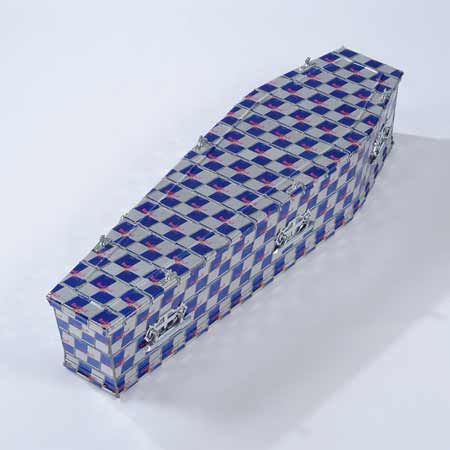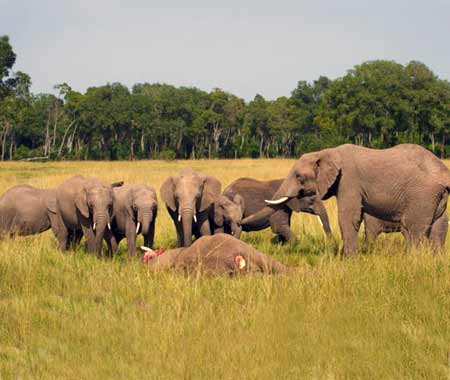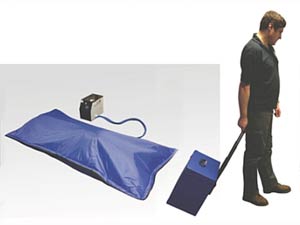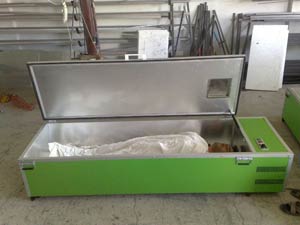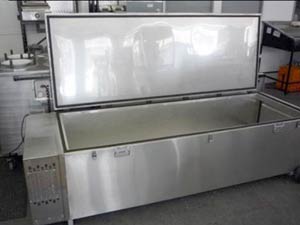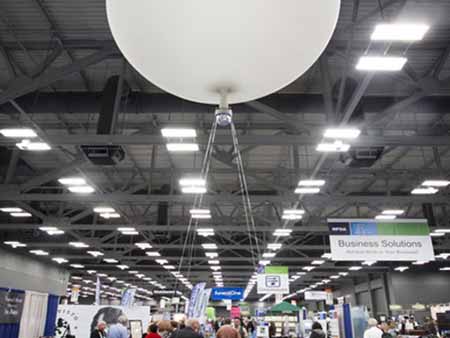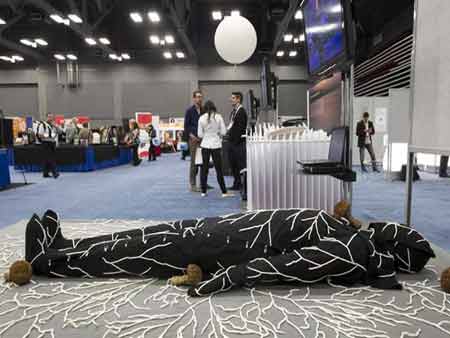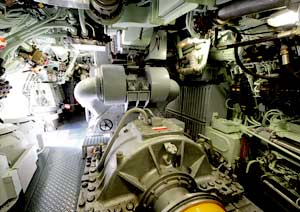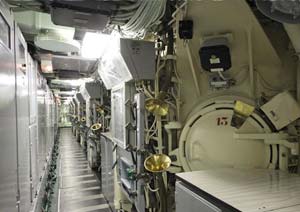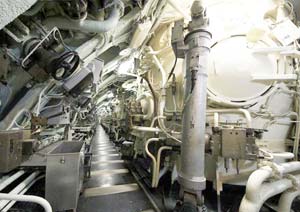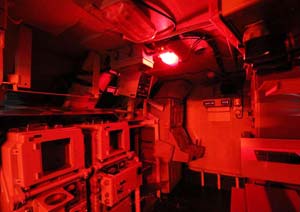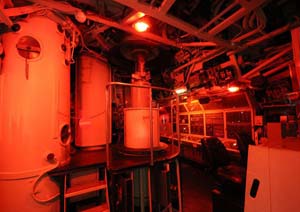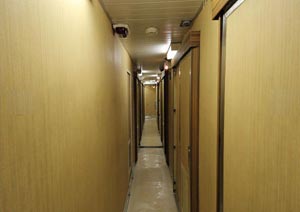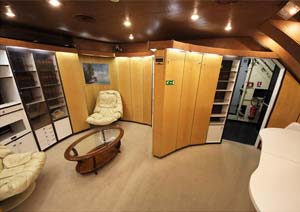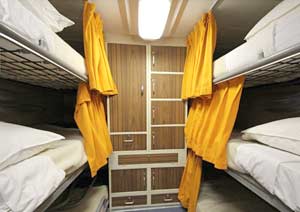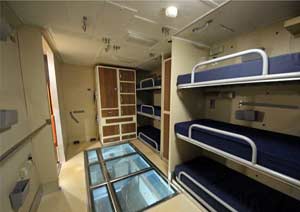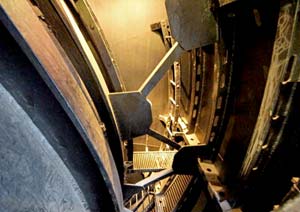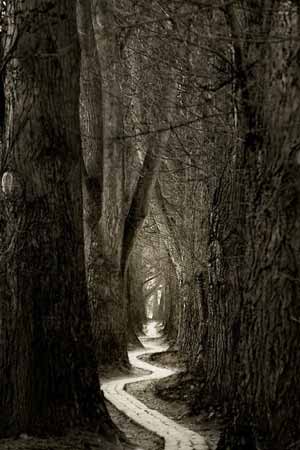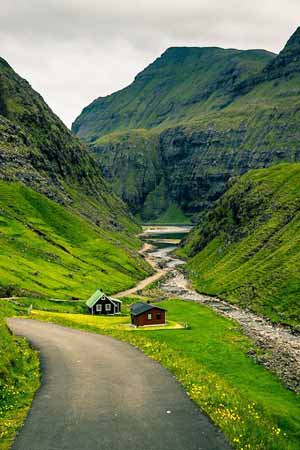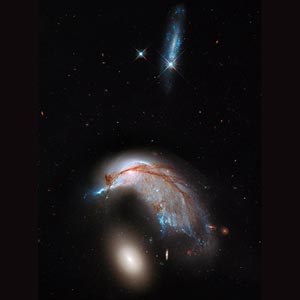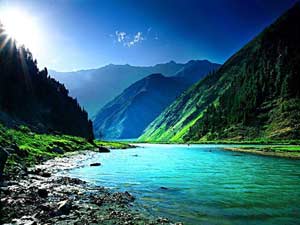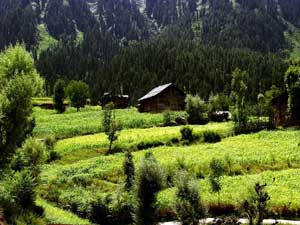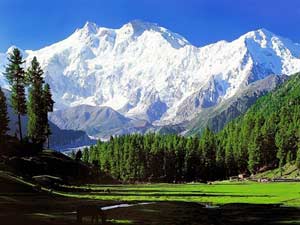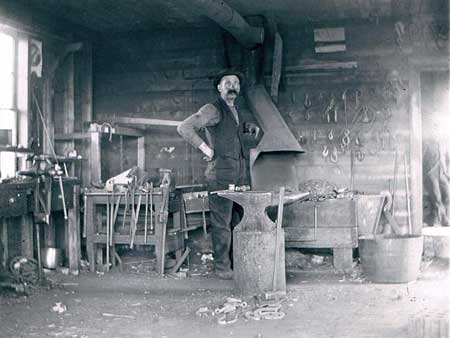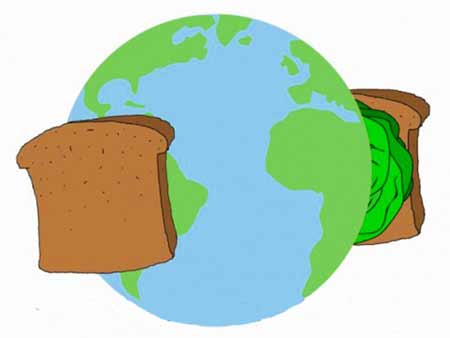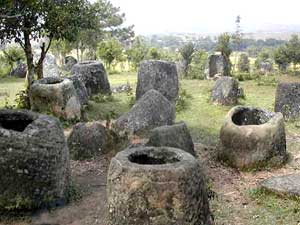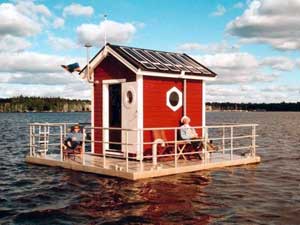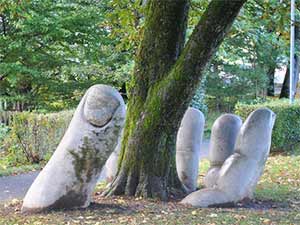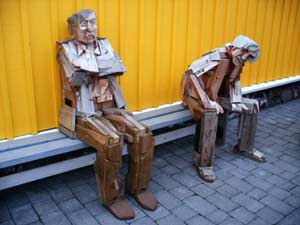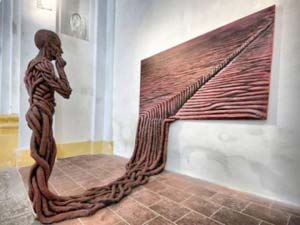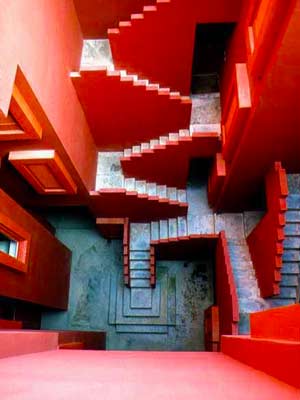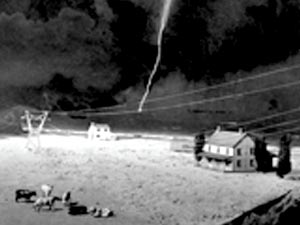You can have money piled to the ceiling but the size of your funeral is still going to depend on the weather.
—Seeing the Dead
Sept. 14, 2014
What is really at the root of how people choose to handle the remains of their deceased? Can perceptions be changed to allow different types of ceremonies to be widely adopted that are less expensive and kinder to the environment, changes that can take place without people having to give up those aspects that are helping them to deal with their grief?
Getting rid of the body is the only thing a death ritual has to do for the public good. Everything else is an elective.
Greg Palmer, Death: The Trip of a Lifetime
The references below are mainly directed toward American funeral practices, though some other countries have adopted many of these.
A quote from Stiff: The Curious Lives of Human Cadavers by Mary Roach, page 12:
One’s own dead are more than cadavers, they are placeholders for the living. They are a focus, a receptacle, for emotions that no longer have one.
Would these emotions be the standard stages of grief: denial, isolation, anger, bargaining, depression? Not necessarily, as those stages were recognised as the ones experienced by the person who is dying, not the ones who are being left. The emotions of the deceased’s loved ones can range anywhere from numbness, rage, fear, dependency, and sadness, to guilt, loneliness, fatigue, helplessness, shock, and even relief and acceptance. Feelings experienced needn’t all be negative, either — in fact, according to the latest research, positive emotions play a pivotal role in helping people deal with loss. In other words, there is no research that shows that being in the presence of a dead body (whether it’s hidden inside a flag- or flower-draped coffin or is in full view, heavily-made-up, dressed in fine clothes, wearing a ring and a watch, absorbent pads underneath, cheeks stuffed with cotton, looking better than life) has any lock on diminishing grief. Humans are pretty resilient. They don’t have to stare death in the face to believe that it’s happened.
As author Ruth Davis Konigsberg writes in her book, The Truth About Grief, page 197:
Perhaps just the knowledge that our survival instinct is strong, and that a great many have not only endured terrible losses but have also thrived, can be a source of hope, something … quite scarce in our grief culture.
Some people seem to put great value on the actual material remains of their loved ones. But the cadaver is no longer the person you once knew and had strong emotions about (unless your religion states otherwise, then skip this paragraph). No person is ever a cadaver. They are a person and then cease to be a person and a cadaver takes their place. A cadaver is like a cicada husk or a shed snake skin. The life is gone. Only the husk remains, not the person. What happens to the body now doesn’t affect the relationship you once had with the deceased. Also, the amount of money spent on arrangements is NOT a reflection of the degree of grief friends and family may be feeling. This is important to remember.
From the Encyclopedia of Death and Dying: Funeral Industry:
In the early years of the industry, the reigning paradigm surrounding the professional duties of funeral directors was limited to his expertise in the area of embalming, running a successful business, and managing the funeral services. In time, another area of expertise that dominated industry rhetoric related to the psychology of grief, and, more specifically, the psychological value of viewing a pleasant-looking body in repose.
On the one hand, members of the industry assert that the last look provides the bereaved with an undeniable message that death has occurred. On the other hand, gazing at the sacred remains initiates a much longer process of healing because it offers those in grief a lasting image or “memory picture” that erases many of the negative images coming to be associated with dying (for example, being hooked up to tubes and wires in an impersonal, antiseptic hospital setting or seeing cancer disfigure the body of a loved one). The funeral industry strongly promoted a psychology of grief that shaped public arguments and led to a range of additional services that many funeral homes began to offer their customers, such as after-death bereavement counselling.
However, this has not been supported by research and a funeral director may have a conflict of interest when he tells you that you need even more of his goods and services. Perhaps “gazing at the sacred remains” makes some people feel worse. Perhaps there are other rituals that could be adopted that make people feel better than that one.
From “Dying Is Expensive: The FTC Funeral Home Abuses” by Mitch Lipka, in the 24 April 2012 issue of Time:
Consumers are at a big disadvantage when conducting business in unfamiliar venues. For most of us, happily, that includes shopping for funerals. As a result, the funeral home business is rife with exploitative practices, despite fairly strict federal regulations governing the industry. In fact, a recent round of undercover visits to funeral homes by the FTC has confirmed that none of us should wait until it’s too late before we learn something about the business of death.
Because those making arrangements are generally coping with the loss of a loved one, consumers tend to let down their guard when it comes to making decisions about funerals. And given how expensive a funeral can be — the total cost often exceeds $10,000 — the stakes are high and opportunities for abuse ample. Between the state in which many people find themselves when a loved one passes away and the infrequency of this happening in one’s lives, there’s a lack of awareness.
Immortality — a fate worse than death.
— Edgar A Shoaff
As to the possibility of change occurring:
According to “The New American Way of Death: No More Cemeteries?” by By Brad Tuttle, in the 19 October 2009 issue of Time:
There is a hot market for the reselling of cemetery plots, one of many odd economic indicators that says something about the times in which we live. People are selling their plots because … societal attitudes seem to be changing regarding the importance of a burial.
From “Starbucks Opening Inside a Funeral Home” by Josh Sanburn, in the 13 July 2013 issue of Time:
Some say the best way to grieve over a loved one is by being around family and friends and remembering all the good times you shared with someone who’s passed. Maybe, if this was 1998. A better way is to drink a cinnamon dolce frappuccino while updating your Facebook page.
So things ARE changing already. But perhaps not very fast. In 1960, fewer than 4% of Americans chose cremation. In 2012, it was 43% (according to the National Funeral Directors Association). Alabama was the lowest at 4% and Nevada the highest at 61%. In London, the cremation rate is 70%; in Tokyo, there’s virtually no alternative to incineration.
However, even better alternatives may be on the horizon — if consumers can just get past potential “ick” factors.
What is really at the root of how people choose to handle the remains of their deceased? I’d say tradition and perception. Can this can be changed? Yes, but slowly. Can it be done away with altogether? I would doubt that. For one thing, humans aren’t the only animals to have burial practices. A young woman on her way to market with her 2-year-old son was charged by an elephant. Both the woman and her son were killed. Before disappearing into the bush, the elephant buried the bodies under leaves and twigs. Elephants are known to bury their own dead under foliage and often stay for days with the body, apparently in mourning. There are old hunters’ tales of seeing elephants bury dead (or sometimes merely sleeping) people under piles of branches. Elephant carcasses and bones are generally found in one central location, away from the herd. Adult elephants carry bones to their final resting place. (It would be interesting to know an elephant’s concept of death.)
You can clutch the past so tightly to your chest that it leaves your arms too full to embrace the present.
— Jan Glidewell
What types of ceremonies are less expensive and/or kinder to the environment? In brief: you can go green, get packed into an artificial reef and dropped offshore, get launched into space or shot into a cloud to make rain, get your ashes compressed into a yellow diamond, get frozen in hopes of future revival, get composted, get studied, or get dissolved. None of these things require embalming. (In a pinch, a body can be kept cold for a day or so when covered with bags of frozen peas.)
- This is Flexmort’s Covercool™ Mini Mortuary Cooling System. It’s been described by users as “the solution for cooling the deceased”. Flexmort’s insulated cover can simply be placed over the deceased, providing a longer time to make arrangements. CoverCool™ cools the body without the need for traditional purpose-built refrigeration or cold rooms. Furthermore, unlike refrigerated beds or coffin coolers, it’s extremely light, portable, and flexible and does not ice. Where to find one and how much to expect to pay to rent or buy it seems to be a closely guarded secret on their site. Perhaps a city could have several it could rent at cost to those wanting to keep funerals more affordable?
- This air-conditioned coffin is manufactured in Turkey and can be bought for less than US$1,000 (shipping is another matter). According to Alibaba, “Refrigerated or air conditioned coffins are for saving corpses. Untill u bury the corpes our device don’t let them to spoil.” Note the viewing window, no extra charge.
- This refrigeration unit is made in India. According to Indiamart, “Our organization is counted amongst the experienced names of the industry, engaged in offering Refrigerated Coffin Boxes. We can design these coffin boxes in various sizes and shapes. Dead bodies can be kept for longer durations in these refrigerated columns.” You have to ask them for a price. These look capable of holding a larger body, which may be a consideration. (Being able to rent one of these locally may not be an option now, but perhaps it should be.)
Regular Burial: This is the “old” way. Cemeteries in the best locations are filling up globally. Expenses of burial are rising. The ground is soaked with toxic preservative chemicals (which prevent deterioration a much shorter time than you might expect). Heavy metals from corroding caskets eventually reach groundwater. Is this really what you want for yourself or your loved ones?
Incinerating: The practice of cremation has been increasingly common in recent times, and it is advocated mainly on the ground that it is safer for the living and more sanitary than ordinary burial in a cemetery. Cremated remains, which are not a health risk, may be buried or immured in memorial sites or cemeteries, or they may be legally retained by relatives or dispersed in a variety of ways and locations. One site recommends, “Please ensure no flammable items are placed within the coffin, which could cause an explosion (and severe damage to the cremator) during the cremation cycle, including aerosol cans, batteries, bottles, and coconuts.” (Coconuts?) Here are a variety of uses to which all or part of the ashes may be put.
- The Eternally Yours Company will paint ashes into a painting.
- Ed Headrick (died 2003), the inventor of the Frisbee, had himself moulded into one.
- Marvel Comics editor and creator of Captain America, Mark Gruenwald (died 1996) had his ashes mixed into the ink used to print a special edition poster of the “Squadron Supreme.”
- Reverend Mad Jack, a tattoo artist who worked out of Chicago, mixed ashes into his ink to make memorial tattoos.
- Celestis, a Soviet Corporation, will send one gram or 7 grams of ashes into low orbit. Gene Roddenberry and Timothy Leary were put into space orbit in September 1999 aboard a US satellite. NASA put one ounce of astronomer Eugene Shoemaker’s ashes onto the Lunar Prospector which crashed into the moon on 31 July 1999. He is, therefore, the first human to be buried on another celestial body.
- Life Gems Company will extract the carbon from ashes and compress a diamond (.25 carat to a maximum of 3 carats is possible).
- The Bios Urn is a funerary urn made from biodegradable materials that will turn ashes into a tree (inside the urn is a pine seed); Their slogan is “Transform death into life through nature.”
- Eternal Reefs Company will mix ashes with cement and add them to a “community reef“ off the coast of Georgia.
- Memory Glass makes personalised, hand-blown glass sculpture and paperweights with ashes suspended within.
- A search will reveal that there are companies prepared to make agricultural implements, ritual objects, and necklaces out of ashes — for example, a teddy bear with a velcro pocket in its back to hold “a velveteen bag with a loved one’s remains.”
Dissolving: In the alkaline hydrolysis process, called resomation (or perhaps bio-cremation), the body is placed in a silk bag inside a metal frame, which is immersed in lye and water mixed with potassium hydroxide and heated under pressure to 302°F. This produces liquid fertiliser and a white dust very similar to ash which can be buried, placed in an urn, or used in any of the ways ashes can be used (see Incinerating above). This is apparently essentially the process that your small intestine uses to digest food. It’s currently available in Saskatchewan, Canada and Florida, USA (where it’s called “flameless cremation”) and is legal in many other states with more being added all the time. The cost of processing a body is about ¼ that of cremation. But critics call the process “undignified” and compare it to being “poured down the drain” at the end of life (a perceived “ick” factor). A funeral directors’ site says that the cost to consumers for the process “is comparable to the price tag for traditional cremation. However, the perceived value of a more environmentally-sound option may allow funeral homes to charge more for this service than for cremation.” If that’s true, funeral directors may get their lobbyists to support laws favouring it.
Freeze Drying: This is usually called promession (or perhaps cryomation). The body is frozen in liquid nitrogen, which makes it brittle. It is then shattered by vibration and vacuum dried to 30-50% of original volume. Metals and debris (such as fillings, pacemakers, or artificial joints, the latter of which can be re-used by someone else needing one) are removed and the remainder put in biodegradable containers and buried in a shallow graves. It’s all completely decomposed in less than a year. More than 60 countries have expressed interest, but only South Korea has legalised the process thus far, though popular opinion could certainly speed this along.
Green Burial: The body is expected to decay (and the sooner the better), so the coffin is made of cardboard, bamboo, willow, or the like. Green burial bans the use of embalming, vaults, conventional markers, and metal caskets. Instead, they use speed or else portable refrigeration units for preservation, and stones, trees or other natural markers for memory aids (and the decedent is possibly added to an online grave-marking site). Proponents of green burials feel that their method is superior to cremation both because amalgam tooth fillings vaporise mercury into the atmosphere and because the energy used is often from fossil fuels. Friedensreich Hundertwasser, best known for his first building, Hundertwasser House, in Vienna, which attracts more than a million visitors each year, chose to be buried at his Kawakawa, New Zealand residence (about a 4-hour drive from Auckland in the Bay of Islands), straight in the ground, without a coffin (directly helping our nation’s growth).
- A balloon that would release one’s ashes into the clouds to be converted to rain is on display at the National Funeral Directors Association (NDFA) Convention at the Austin Convention Center 22 October 2013.
- A mushroom death suit is on display at the NDFA Convention. This first prototype of the Infinity Burial Suit is embroidered with thread infused with mushroom spores. The embroidery pattern resembles the dendritic growth of mushroom mycelium. The suit is accompanied by an alternative embalming fluid, a liquid spore slurry, and Decompiculture Makeup, a two-part makeup consisting of a mixture of dry mineral makeup and dried mushroom spores and a separate liquid culture medium. Combining the two parts and applying them to the body activates the mushroom spores to develop and grow.
Conclusion
If man were immortal he could be perfectly sure of seeing the day when everything in which he had trusted should betray his trust,
and, in short, of coming eventually to hopeless misery.
He would break down, at last, as every good fortune, as every dynasty, as every civilisation does. In place of this we have death.
— Charles Sanders Peirce
Emotions can become powerful during a time of death of a loved one just when one is required to make difficult decisions, often involving tens of thousands of dollars at a time when one can barely think. Something for all of us to consider is how it would help our relatives to receive not only clear instructions as to the type of funeral and burial we’d like to have (or NOT to have), but to indicate who has what rights to handle which details. Such instructions should be in writing and ideally delivered to one’s attorney and executor. Too often people place such instructions in safe deposit boxes which cannot be opened or, worse, put them among piles of papers which are only examined long after burial.
Such an effort on your part can be one of your kindest bequests to your loved ones. And please consider both cost savings and the environment for those who live on. You can help change tradition by shouldering the responsibility for change so your family doesn’t need to (“it’s what he wanted…”).
Sources
Death is the wish of some, the relief of many, and the end of all.
— Lucius Annaeus Seneca
“Alkaline hydrolysis (death custom)” from Wikipedia, accessed 29 August 2014, http://en.wikipedia.org/wiki/Alkaline_hydrolysis_.
“[Ask tThe Expert] Alkaline Hydrolysis: A 'Greener’ Option?” by Cara Terreri, Connecting Directors, 9 January 2013, http://connectingdirectors.com/articles/38144-ask-the-expert-alkaline-hydrolysis-a-greener-option.
“Biodegradable coffins” from the Salford City Council, accessed 30 August 2014, http://www.salford.gov.uk/alternative-coffins.htm.
“Burial” from Wikipedia, accessed 30 August 2014, http://en.wikipedia.org/wiki/Burial.
Corpse, The: A History by Christine Quigley, McFarland, 2013, 358 pages.
“Caring for the Caregiver after Death” by Larry Lachman, PhD, accessed 1 September 2014, http://www.drlarrylachman.com/people/caring-for-the-caregiver.php.
Death to Dust: What Happens to Dead Bodies? by Kenneth V Iserson, MD, Galen Press Ltd, 2nd Edition, 2001, 780 pages.
“Grave situation: Cemeteries to run out of burial plots within next few years” by Ross McGuinness, Metro, 3 October 2013, http://metro.co.uk/2013/10/03/burial-plots-grave-running-out-of-graves-4131464/.
“Haere Ra Hundertwasser” by Tessa Laird, Fusion Anomaly.
“Promession” from Wikipedia, accessed 29 August 2014, http://en.wikipedia.org/wiki/Ecological_funeral.
“Rights and Obligations as to Human Remains and Burial” by the Law Offices of Stimmel, Stimmel & Smith, accessed 29 August 2014, http://stimmel-law.com/articles/rights_and_obligations_to_human_remains_and_burial.html.
“Scarce Cemetery Space Creates Prices to Die For: Cities” by Fiona Flavia Krause-Jackson, Bloomberg, 5 August 2014, http://www.bloomberg.com/news/2014-08-04/scarce-cemetery-space-creates-prices-to-die-for-cities.html.
“States consider: Is it legal to dissolve bodies?” by the Associated Press, Syracuse.com, 2 June 2011, http://www.syracuse.com/news/index.ssf/2011/06/states_consider_is_it_legal_to.html.
Here lies Ann Mann,
Who lived an old maid
But died an old Mann
— Epitaph of Ann Mann, 8 December 1767
London, England
The Distillery
What we learn from history is that we do not learn from history.
— Benjamin Disraeli
The Ballistic Missile Submarine Redoubtable
As a French word, Redoutable is pronounced with little concern for the letters involved; it means “formidable”, which is an apt name. Launched in 1967 and commissioned in 1971, the Redoutable spent 20 years at sea, was home to thousands of sailors (135 at a time), and clocked up nearly 800,000 miles. She was the first of her class, that of a state-of-the-art war machine designed for stealth. The missile-boat-turned-museum, after extensive refurbishment, resides in the French seaside town of Cherbourg.
- It’s pretty much impossible to get a full shot of the sub, given where it rests and how large it is (420 feet long and 35 feet wide).
- To the left is where you enter, the yellow cap is the other half of the severed prop shaft. Above, you can see some of the big hydraulics that turn the rudder.
- This looks like a nuclear power station control room.
- The Redoutable carried 16 M20 ballistic missiles, each with a range of over 1,800 miles.
- The missiles were fired using compressed air and never actually got wet. As they breached the surface, their engines fired, quickly accelerating to over 9,000 miles per hour.
- Around the corner from the missile bay is the command centre. Apparently they did actually use red lights during high alert and/or exercises. Also, throughout the rest of the ship, they’d use red lights to simulate night.
- Periscopes were for the use of the XO and captain.
- Have we left the submarine and entered a ’70s kitsch hotel?
- This is a submarine? Why no arms on the chairs? Apparently the only thing that prevents a sub from touring indefinitely is sufficient supplies (mainly food) for the crew. Normal tours were about 70 days.
- The Redoutable was said to be the first sub to have enough space for every member of its crew to get his own bunk.
- Through the glass in the floor, one can view the chair of the ship’s doctor. The chair doubled as the dentist’s chair as well, because the ship’s dentist and the ship’s doctor were the same person.
- Here, one can see the inner pressure hull, the exterior hull, and the cross bracing. Normally subs cruise 164-656 feet below the surface.
Hit the Road
- Point Reyes National Seashore, Marin Country, California.
- Since the photographer is in Germany, I’ll guess the location of the photo may be near there. Somewhere.
- Saksun is a village near the northwest coast of the Faroese island of Streymoy. (The Faroes are an autonomous country within the Kingdom of Denmark.) Saksun lies in the bottom of what used to be an inlet of the sea, surrounded by high mountains. The inlet once formed a deep natural harbour, but a bad storm eventually blocked the inlet with sand. This made the harbour into a saltwater lagoon, inaccessible except by small boats at high tide.
The Sky Has No Limit
- This is an image of Earth and the moon at a range of 142 million kilometres. On the earth image is the west coast outline of South America at lower right, although the clouds are the dominant features. This colour image required a fair amount of processing.
- This omposite image taken by NASA’s Solar Dynamics Observatory (Little SDO) shows a series of significant solar eruptions that occurred over a period of 3 days back in January of 2013. The photo was created using 3 wavelengths of light that were colourised in red, green, and blue to better show the dynamics of each eruption.
- Neptune’s innermost moon, Naiad, is seen here for the first time since the Voyager 2 flyby of 1989. An occulting mask was placed in front of Neptune to reduce the planet’s glare. Nepture appears to be swimming in a sea of debris.
- Visible in this image are dense knots of dark interstellar dust, bright stars that have formed in the past few million years, fields of glowing hydrogen gas ionised by these stars, and great loops of gas expelled by dying stars. A detailed study uncovered at least 33 massive stars in the end stages of formation, and the clear presence of the complex carbon molecules known as polycyclic aromatic hydrocarbons (thought to be created in the cooling gas of star forming regions). Their development in the sun’s formation 5 billion years ago may have been an important step in the development of life on Earth. This is in the Sagittarius arm of the Milky Way galaxy.
- Looking like the profile of a celestial platypus with her egg, this is one galaxy encountering another. Collectively, the two are known as Arp 142. The pair contains the disturbed, star-forming spiral galaxy NGC 2936, along with its elliptical companion, NGC 2937 (lower left). Once part of a flat, spiral disk, the galaxy’s stars now have scrambled orbits due to gravitational tidal interactions with its companion. This warped its former orderly spiral, strewing interstellar gas into giant tails like stretched taffy. Bluish knots of star formation are visible along the distorted arms closest to the companion. The reddish dust, once within the galaxy, has been thrown into dark veins silhouetted against bright starlight. The companion elliptical is a puffball of mostly old stars with little gas or dust. The gravitational pull of its neighbour appears to have has little effect on it. Above the pair, an unrelated lone bluish galaxy appears which is much closer, though smaller, than the colliding pair. Arp 142 lies in the southern constellation Hydra.
- The Cat’s Paw Nebula, otherwise known as NGC 6334, is experiencing a “baby boom.” The nebula contains about 200,000 suns’ worth of material coalescing to form new stars. It houses tens of thousands of recently formed stars, more than 2,000 of which are extremely young and still trapped inside their dusty cocoons. The cause isn’t clear. The starburst in NGC 6334 began relatively recently and will last for only a few million years — a blink of the eye on cosmic timescales. In the constellation Scorpius, this nebula spans a distance of about 50 light-years and covers an area on the sky slightly larger than the full moon.
The Natural Beauty of Pakistan
- The Kaghan valley is named after the town of Kaghan rather than for the Kunhar River which flows through the length of the valley. The valley extends 155 kilometres (96 miles), rising from an elevation of 2,134 feet (650 metres) to its highest point, the Babusar Pass, at 13,690 feet (4,170 metres). Naran is the main town and tourist destination in the valley. It is the base station that allows further travel to sites such as Lake Saif-ul-Malook and Lalazar. The people of the valley speak Hindko and Gojri, while Urdu, Pakistan’s national language is also familiar among the locals due to the presence of the tourist industry. The region is Alpine in geography and climate, with forests and meadows dominating the landscape below peaks that reach over 17,000 feet (5,200 metres).
- Until the mid-19th century, the term Kashmir geographically denoted only the valley between the Great Himalayas and the Pir Panjal mountain range. Today, it denotes a larger area that includes the Indian-administered state of Jammu and Kashmir (which consists of Jammu, the Kashmir Valley, and Ladakh), the Pakistan-administered territories of Azad Kashmir and Gilgit–Baltistan, and the Chinese-administered regions of Aksai Chin and the Trans-Karakoram Tract. There’s still a bit of disagreement as to who should own what (with all that that implies).
- The Rakhiot (north) flank, Rupal Face of Nanga Parbat (8,125 metres) as seen from Fairy Meadows. This is the 9th tallest mountain in the world, and a dangerous one to climb.
Shower Thoughts
- JPL, a division of the California Institute of Technology in Pasadena, manages the Mars Science Laboratory Project for NASA’s Science Mission Directorate in Washington.
- This is an ideal form of exercise during pregnancy. (I presume it helps if the water is warm.)
- (... so maybe that’s why Smith is such a common surname?) This is the blacksmith shop at the Reynolds Brothers Mill and logging camps, Reynolston, New York, taken from a glass plate. Perhaps this is Mr Shepherd who was the blacksmith for the Reynolds Mill for many years. He was probably paid about 25 cents per day.
- If you think about it, it might become more clear? Those slices of bread are scary large.
Oddities
- The Plain of Jars is located on the plateau of Xieng Khouang, in the mountains of Indochina. There are about 90 different jars sites, each containing from 1 to 400 jars that were created as early as 2-3 thousand years ago. They’re made of sandstone, limestone, granite, breccias and conglomerate, with the majority sandstone. They vary in height from 1-3 metres (3-10 feet) and all are made from their own individual slab of stone, always cylindrical, with the bottom always wider than the top. At first glance they seem haphazardly placed, with some standing upright and others on their sides, pointing in different directions. Further studies reveal the jars form the constellation patterns of the stars. Many researchers claim the jars are associated with prehistoric burial practices. While most of them are empty, a few had bodies or tools inside. Evidence indicates most bodies may have been cremated. Since most jars have lip rims, it’s assumed they once had lids, though, since few lids remain, most lids may have been from a perishable material. Exploration is difficult because the area is littered with 80 million unexploded cluster bombs from the Secret War with the US between 1964 and 1973. According to one Lao official, clearing the ordnance will take 100 years. The bombs kill and maim hundreds each year. Since some of them resemble children’s balls, many are children who find one and toss it to a companion. For several years New Zealand has helped Laos to clear these bombs away, but there is a long way to go.
- The pilots who averted a near-miss crash at Barcelona airport say the air traffic controller “went silent” as another plane getting ready for a flight to Buenos Aires taxied across its path on the runway. The captain of the Boeing 767, which was carrying 260 passengers, was forced to perform an emergency “go-around” procedure to avoid hitting the Aerolineas Argentinas Airbus A340 at El Prat Airport in Spain. The incident could have been serious were it not a clear day. He pulled the plane up without waiting for instructions from the ground. The air traffic controller apologised afterwards for his failure. The jet, which had travelled from Russia, landed safely shortly afterwards.
- This is a floating, underwater hotel, where you sleep in an underwater aquarium. It’s an art project by Mikael Genberg that offers underwater accommodation to the public. The facility is entered through a small, typical-appearing Swedish house located on the surface of the water. The single room of the hotel lies 3 metres below the surface of Lake Mälaren in Västerås, Sweden (due west of St Petersburg, Russia) and it contains only twin beds and a table. The Otter Inn simulates the most typical of Swedish dreams; to have a small Swedish red house with white gables on your own island. On top of that, you can spend the night 3 meters underwater with panoramic windows in all directions. The hotel is a kilometre from the shore. The cost is US$400-550 per night in summer. If guests have selected the deluxe version, they’ll get a visit later with their supper. They are provided with a small, inflatable boat (at least), though there is no mention of cellphone coverage in case of emergancies. The reviews are glowing (in case you want to give it a try).
Photos OF Art / Photos ARE Art
- The Caring Hand is a sculpture by artists Eva Oertli and Beat Huber, completed in 2004.
- Lifelike scrap wood sculptures created by Adelheidur Eysteinsdottir. These men are now forever waiting for a table outside a popular restaurant in Siglufjörður, Iceland.
- Michal Trpák: “Escape into Reality” is (according to the artist) “a combination of a painting, a relief and a sculpture”. In the right light, it looks like it’s made of ground beef. And you can buy it for only US19,000.
- This was painted by Ed Novak in 2007 and is for sale for a mere US$550.
- This is from a series called “Horizons”. It is a sunset in Wisconsin.
- La Muralla Roja (The Red Wall) is a housing project designed by architect Ricardo Bofill, located in the La Manzanera development in Spain’s Calpe in Marina Alta Valencia, Spain. It was inspired by the Mediterranean tradition of the casbah. The striking colours that cover the outer and inner façades are selected to either contrast with nature or complement its purity.
- LundLund was founded 1994 in Stockholm by sisters Britta and Karin Lund and is the top agency within the international fashion industry, representing a number of Sweden’s most renowned and rewarded photographers, DOPs, stylists, set designers, hair stylists, make-up artists, food stylists and illustrators. They produce campaigns for a wide range of Swedish and international brands. Clients include Volvo, Dior, Lanvin, Absolut Vodka, Vogue, Elle, Harper’s Bazaar, and GQ. This shoot was apparently for 25 Magazine.
- Iron bar & pipe shop, Youngdengpo in Seoul, South Korea. This was an entry in the National Geographic Photo Contest for 2012.
- Westinghouse engineers used this miniature system for tests. Upper wires detoured the 3 million volts harmlessly to the ground. Lower wires, which carry the power load, are thereby protected against lightning, which might shut off the current or damage equipment. Even the cows are man-made. From the National Geographic book National Geographic Image Collection, a photo of the day from 2009.
 Animals
Animals Animation
Animation Art of Playing Cards
Art of Playing Cards Drugs
Drugs Education
Education Environment
Environment Flying
Flying History
History Humour
Humour Immigration
Immigration Info/Tech
Info/Tech Intellectual/Entertaining
Intellectual/Entertaining Lifestyles
Lifestyles Men
Men Money/Politics/Law
Money/Politics/Law New Jersey
New Jersey Odds and Oddities
Odds and Oddities Older & Under
Older & Under Photography
Photography Prisons
Prisons Relationships
Relationships Science
Science Social/Cultural
Social/Cultural Terrorism
Terrorism Wellington
Wellington Working
Working Zero Return Investment
Zero Return Investment
